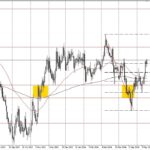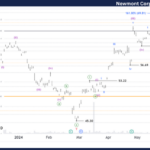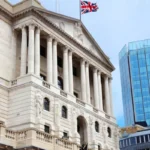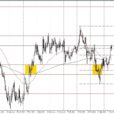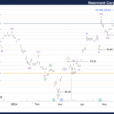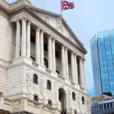
It’s May. In June, the European Central Bank is set to cut by 25bp. In September, we think the Fed will cut. The period in between and up till June should see wider Treasury/Bund spreads and a relative steepening in the eurozone curve.  Pixabay The European Central Bank beating the Federal Reserve to the first cut is remarkable in itself, as the mantra over recent decades has been for the Fed to make the first moves, paving the way for the ECB (and indeed, many other central banks). It has copper-fastened the dominant market narrative of US rates being a directional lead indicator for eurozone rates. And given the near certainty of this, real-time correlation has been high. That correlation remains high. The gap between US and euro rates is wide at both ends. It’s likely to get widerRight now, we have the US 10-year Treasury yield in the 4.5% area. That compares with a German 10-year yield of 2.5%, so effectively a 200bp gap between the two. That’s high. The average in the past three decades has been 70bp. But these are unusual circumstances, and if indeed the ECB kicks off a rate-cutting cycle ahead of the Fed, that should echo right out the curve, widening the 10-year spread further. The absolute high was 260bp in 2018. We think the spread can head in that direction and that the 200bp to 250bp range is one we should be looking at.We should see something similar play out in the 2-year area. Here, the spread is 190bp. That has averaged 50bp but has also seen an ultimate high of 335bp back in 2018, when the ECB was holding in negative rates territory while the Fed was getting some rate hiking done. That was quite some spread, and getting back there would likely require the ECB to keep cutting, and for the Fed not to cut in 2024 at all. That’s a combination that we think is unlikely, but at the same time not inconceivable. We’d class it as a path of least resistance to pursue until disproven. US inflation is a vital driver. It needs to cool down, if not spreads will just keep wideningThe key driver here is US inflation. For the first quarter, US prices rose by 1%. Annualize that and you get to 4% inflation, which is too high. If that trend continues, the market will price out Fed rate cuts for 2024, and the aforementioned spreads (eurozone into US) can really soar. But if, as we think, US inflation slows, then the widening in spreads can be muted.The problem is that the market discount for April inflation is already shaping up to be broadly in line with 4% inflation. So, it may not be till the May readings that we see some calming. This leaves us with at least a four-week window ahead where the wider spread trend continues. The outcomes are a relative Euro steepener and even better for carry on swapsA few things flow from this. First, market rates should be pulled lower in the coming three to six months (as they typically fall when the Fed cuts). Second, for now there is more steepening (dis-inversion) potential on the eurozone curve. And third, both 2-year and 10-year spreads between US and eurozone rates have the capacity to widen.The bottom line is that it widens the carry advantage on paying lower euro rates and receiving US rates, a play that both asset managers (for higher yield) and liability managers (lower interest rate costs) can employ.More By This Author:Asia Week Ahead: Growth From Japan And Inflation Reports From China And India FX Daily: Sterling On The Edge The Commodities Feed: US Crude Inventories Edge Lower
Pixabay The European Central Bank beating the Federal Reserve to the first cut is remarkable in itself, as the mantra over recent decades has been for the Fed to make the first moves, paving the way for the ECB (and indeed, many other central banks). It has copper-fastened the dominant market narrative of US rates being a directional lead indicator for eurozone rates. And given the near certainty of this, real-time correlation has been high. That correlation remains high. The gap between US and euro rates is wide at both ends. It’s likely to get widerRight now, we have the US 10-year Treasury yield in the 4.5% area. That compares with a German 10-year yield of 2.5%, so effectively a 200bp gap between the two. That’s high. The average in the past three decades has been 70bp. But these are unusual circumstances, and if indeed the ECB kicks off a rate-cutting cycle ahead of the Fed, that should echo right out the curve, widening the 10-year spread further. The absolute high was 260bp in 2018. We think the spread can head in that direction and that the 200bp to 250bp range is one we should be looking at.We should see something similar play out in the 2-year area. Here, the spread is 190bp. That has averaged 50bp but has also seen an ultimate high of 335bp back in 2018, when the ECB was holding in negative rates territory while the Fed was getting some rate hiking done. That was quite some spread, and getting back there would likely require the ECB to keep cutting, and for the Fed not to cut in 2024 at all. That’s a combination that we think is unlikely, but at the same time not inconceivable. We’d class it as a path of least resistance to pursue until disproven. US inflation is a vital driver. It needs to cool down, if not spreads will just keep wideningThe key driver here is US inflation. For the first quarter, US prices rose by 1%. Annualize that and you get to 4% inflation, which is too high. If that trend continues, the market will price out Fed rate cuts for 2024, and the aforementioned spreads (eurozone into US) can really soar. But if, as we think, US inflation slows, then the widening in spreads can be muted.The problem is that the market discount for April inflation is already shaping up to be broadly in line with 4% inflation. So, it may not be till the May readings that we see some calming. This leaves us with at least a four-week window ahead where the wider spread trend continues. The outcomes are a relative Euro steepener and even better for carry on swapsA few things flow from this. First, market rates should be pulled lower in the coming three to six months (as they typically fall when the Fed cuts). Second, for now there is more steepening (dis-inversion) potential on the eurozone curve. And third, both 2-year and 10-year spreads between US and eurozone rates have the capacity to widen.The bottom line is that it widens the carry advantage on paying lower euro rates and receiving US rates, a play that both asset managers (for higher yield) and liability managers (lower interest rate costs) can employ.More By This Author:Asia Week Ahead: Growth From Japan And Inflation Reports From China And India FX Daily: Sterling On The Edge The Commodities Feed: US Crude Inventories Edge Lower



